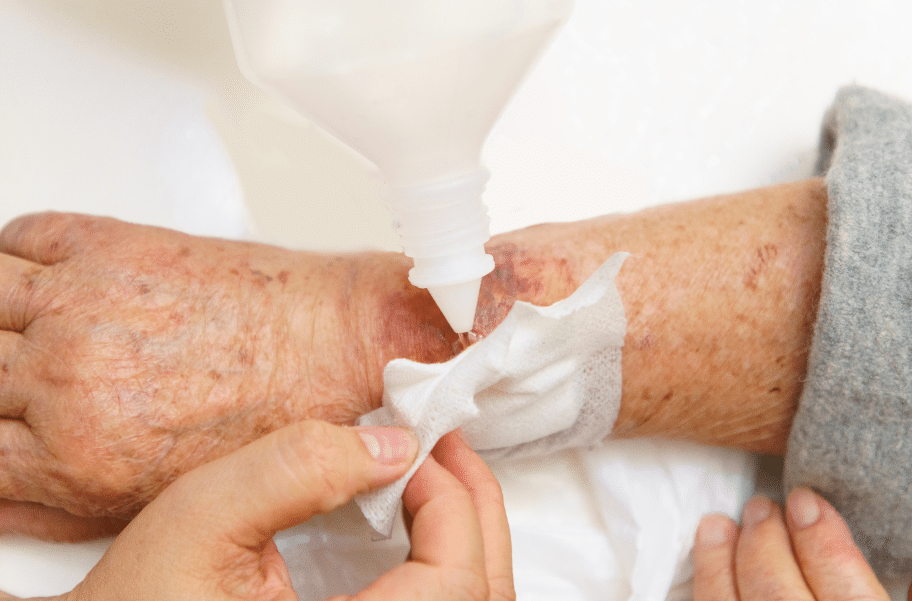
Wound Cleaning and Debridement
Essential Steps for Optimal Wound Healing
Wound Cleaning and Debridement
Cleaning the wound is the first step in our wound care protocol. We focus on removing dirt, debris, and necrotic tissue to prevent infection and promote healing. Our debridement techniques include surgical instruments, mechanical methods, enzymatic agents, and autolytic processes.
What is Wound Cleaning and Debridement?
Wound cleaning and debridement are critical components of wound care management aimed at removing contaminants, dead tissue, and debris from a wound to promote optimal healing. These procedures help prevent infection, reduce inflammation, and create a conducive environment for tissue regeneration.
How Wound Cleaning and Debridement Work
Effective wound cleaning and debridement involve several key steps:
- Assessment: Evaluating the wound to determine the extent of contamination and the need for debridement.
- Cleaning: Thoroughly irrigating the wound with saline or an appropriate cleansing solution to remove dirt, bacteria, and exudate.
- Debridement: Removing necrotic (dead) tissue, which can be done using various methods such as:
- Autolytic Debridement: Utilizing the body’s natural enzymes and moisture to break down dead tissue.
- Mechanical Debridement: Using physical methods like wet-to-dry dressings or wound irrigation.
- Enzymatic Debridement: Applying topical enzymes that selectively digest necrotic tissue.
- Surgical Debridement: Using surgical instruments to excise dead tissue, typically performed by a healthcare professional.
- Biological Debridement: Using sterile maggots to consume dead tissue.
- Dressing: Applying an appropriate dressing to protect the wound and maintain a moist healing environment.
- Monitoring: Regularly inspecting and cleaning the wound as needed to ensure continuous healing.
Benefits of Wound Cleaning and Debridement
Proper wound cleaning and debridement offer numerous benefits:
- Infection Prevention: Reduces the risk of infection by removing bacteria and contaminants.
- Enhanced Healing: Promotes faster and more effective healing by removing barriers to tissue regeneration.
- Reduced Inflammation: Minimizes inflammatory response by eliminating necrotic tissue.
- Improved Oxygenation: Enhances blood flow and oxygen delivery to the wound site, supporting cellular repair.
- Pain Reduction: Proper cleaning and debridement can alleviate discomfort and promote patient comfort.
Applications of Wound Cleaning and Debridement
These procedures are essential for various types of wounds, including:
- Acute wounds (e.g., surgical wounds, traumatic injuries)
- Chronic wounds (e.g., diabetic ulcers, pressure ulcers, venous ulcers)
- Infected wounds
- Necrotic wounds
- Burns
Our Wound Cleaning and Debridement Services
MetaCure offers comprehensive wound cleaning and debridement services tailored to each patient’s specific needs. Our team of experienced specialists will assess your wound, determine the most appropriate cleaning and debridement methods, and provide ongoing care to ensure optimal healing. We work closely with your facility to integrate these procedures into your patient care protocols, offering training and support to your staff.